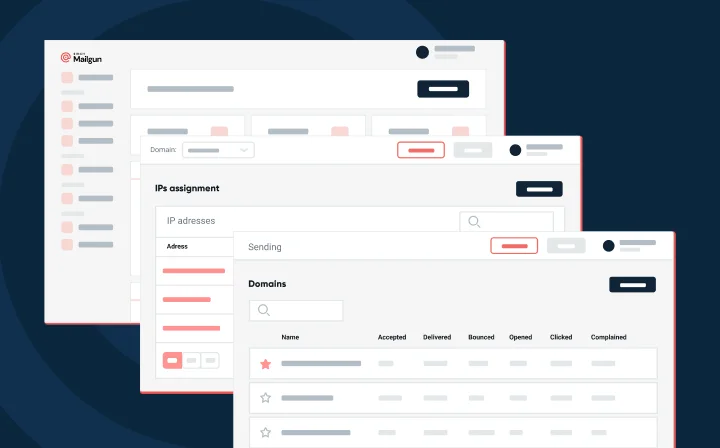Product
How quickly can Mailgun process my messages? Introducing the rapid fire delivery SLA

Product

This was originally published on November 2, 2017.
For big senders, getting a lot of messages out the door in a very short period of time can be especially challenging. Once your message is set up, you want it to reach inboxes in seconds, not hours, and we want to make sure that happens.
While we can’t expedite how quickly you get your messages to Mailgun or how long it takes inbox providers to deliver your messages into inboxes, we can monitor how efficiently we process your messages and make our initial delivery attempt.
With a scalable, cloud-based infrastructure, our systems can quickly adapt to changing volumes to the point that we’re willing to back it up with a guarantee for customers with high-volume, time-sensitive sends. It’s called the Rapid Fire Delivery SLA.
Rapid Fire gives you the high velocity delivery and capacity to send up to 15 million messages per hour whenever you want. As soon as your email is accepted by Mailgun, we’ll initiate the first delivery attempt, sending 99% of messages in less than five minutes of receipt.

Whether you need to send 15,000 messages per hour or 15 million, we can guarantee that sending rate with the Rapid Fire Delivery SLA. This means you can get your high-volume emails out to customers at the optimal time without ever worrying about delays in processing. And you can enjoy the peace of mind that comes with an SLA-backed commitment.
In other words, with Rapid Fire, you won’t end up with a situation like this:

(And if you do, we’ll pay you.)
Simply put, because we were asked to. Every quarter, we talk to dozens of customers and prospects who send things like stock alerts or flash sale emails – messages with very tight time constraints. For these customers, delays can cause serious issues and even jeopardize their business, so we wanted to ensure that these customers could meet their delivery goals.
Because Mailgun’s built on the cloud, we have the ability to dynamically provision our infrastructure and manage our capacity without having to rack and stack servers. And we used this to our advantage when devising a way to reduce message processing time. Our goal was to consistently hit delivery milestones with enough confidence to not only assure our customers of our ability to perform but back it up with an actual SLA.
Anytime we talk to customers who send millions of messages a month, we tend to ask the same general questions: How did you source your email list? What’s the purpose behind your send? Do you have any spiky sending requirements? If the last answer is “yes,” that’s something we immediately want to learn more about.
For most customers, they see a three-million-email send as a pretty standard request, but they also want to be able to deliver these emails in a relatively short window. To meet this demand, we have to scale some aspect of our platform to solve for both our normal traffic high-water mark and this new spike, or else we risk platform-wide throttling (not acceptable).
We’ve designed our message processing algorithms to optimize for a level of fairness across the platform, ensuring that customers who are sending transactional messages, which should always be delivered quickly, don’t become penalized by someone sending a huge marketing blast. While this trade-off works for most customers, it does mean that bursty senders can experience larger message processing delays due to this design.
When working to accommodate these types of workloads, it translates to a significantly higher burden on our infrastructure. Even though that infrastructure is in the cloud, we, like many SaaS providers, try to keep as much of our hosting spend on reserve instances to further reduce cost. As we plan for spikes, our platform has to support this dynamically, and we have a diminished ability to manage our costs at a macro level.
For a lot of message types, there’s a window when your email will make the most impact, and there are a number of factors you need to consider between executing the send command and getting the email into the inbox. Rapid Fire allows you to remove one of these variables – the attempt to deliver – from your consideration.
Several different use cases can benefit from this level of fast delivery and capacity. This is by no means an exhaustive list, but these are great examples of the time-sensitive, high-volume messages that Rapid Fire can be used for:
Deal sites that offer daily emails generally need their messages to: a) get to customers at a specific time each day, and 2) reach a large list of recipients. Rapid Fire Delivery SLA solves for both.
Financial alerts and stock market notifications are only relevant for a short amount of time. Rapid Fire gives you the ability to give your customers financial news as it happens.
According to Experian’s Top 5 Flash Sale Tips, two-hour flash sales bring the best click-to-open rates, and three-hour flash sales have the best transaction-to-click rates. This means companies have a pretty narrow window in which to get their flash sale messages in front of customers, and Rapid Fire allows you to achieve optimal timing without having to sweat it.
Service providers send thousands of messages on behalf of their customers on a regular basis. With Rapid Fire, you can confidently get more emails through the system. Plus, you can assure your customer base that their emails will be processed quickly. This allows you to concentrate on other aspects of your service, knowing that your email solution can scale with you.
One of the greatest advantages of Rapid Fire is that you don’t have to plan your emails as far in advance. This gives you a lot of flexibility to make last-minute adjustments and still get your message out to a large list of customers at the desired time.
With the ability to send messages more quickly comes the ability to receive messages more quickly. With faster inbound processing, you can engage with customers with the confidence that you’re acting on the latest information.
Want to learn more about the Rapid Fire Delivery SLA? Click here to get additional info on our fast delivery, high volume email solution and talk to one of our email experts about how Rapid Fire works.